
Migrating Small Business Banking Legacy Tools to Salesforce
As a Senior Product Designer, my role focused on understanding existing legacy software and ensuring a seamless transition by optimizing usability into Salesforce CRM by working closely with the stakeholders.
- •Refined workflows to reduce friction and improve task efficiency
- •Integrated legacy banking tools into Salesforce CRM while maintaining usability
- •Validated adoption metrics by contributing to prototype development and participating in internal user testing to measure usability and effectiveness
- •Improved user performance by customizing Salesforce components to align with stakeholder requirements
Use Case
Modernizing Small Business CRM
Wells Fargo's small business bankers relied on outdated applications with disconnected tools, making client relationship management inefficient and time-consuming.
Collaborating with stakeholders, the Salesforce architect, and UX researchers, my challenge as a Senior Product Designer was to create a Salesforce solution that streamlined workflows, reduced errors, and improved data accuracy. By integrating existing components that met banker requirements and developing a custom solution, we enhanced efficiency and scaled the design across Wells Fargo's CRM.
The UX Process
The transition from Wells Fargo's legacy CRM tools to Salesforce represented a significant improvement in usability, efficiency, and system integration. The legacy system required bankers to navigate outdated and complicated applications that integrated several applications resulting in fragmented workflows and inconsistent data entry. The new Salesforce solution consolidated these tools into a unified experience, reducing errors and streamlining client management.
Navigation & Information Architecture
Before: Bankers had to navigate multiple disjointed screens to locate client portfolios, increasing cognitive load and reducing efficiency. The lack of an integrated search forced users to exit their primary workflow, disrupting task continuity and making portfolio management more time-consuming.
After: A consolidated Client Groups View with collapsible relationships and enhanced multi-criteria search (name, ECN, revenue) significantly reduces search time and improves task completion.
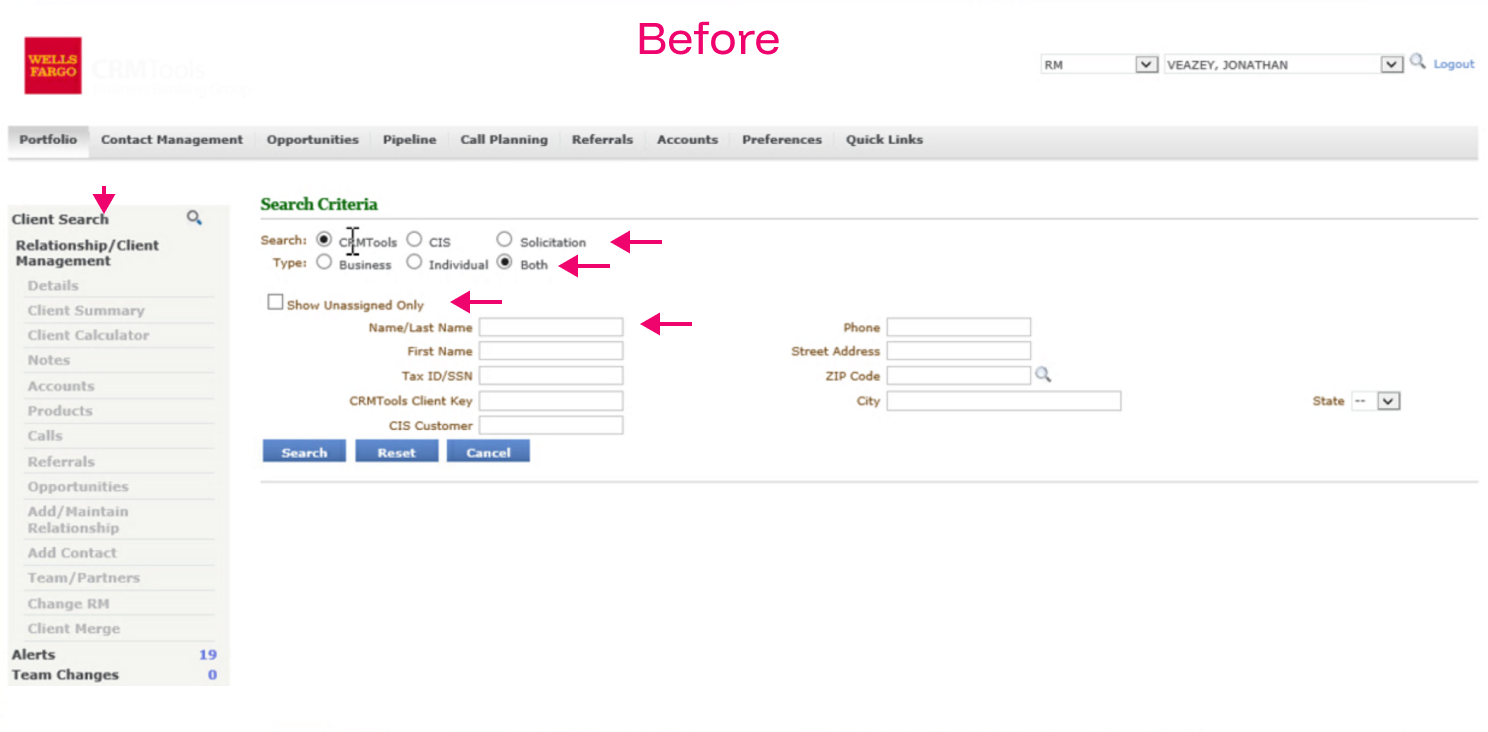

Portfolio & Client Relationship Management
Before: Relationship managers struggled to efficiently track and manage client interactions across fragmented screens. Adding new clients was a complex, multi-step process.
After: The Portfolio View centralizes client management, improving visibility and relationship tracking. A new Add New Client Group feature simplifies the onboarding process, making it more intuitive and reducing cognitive load.
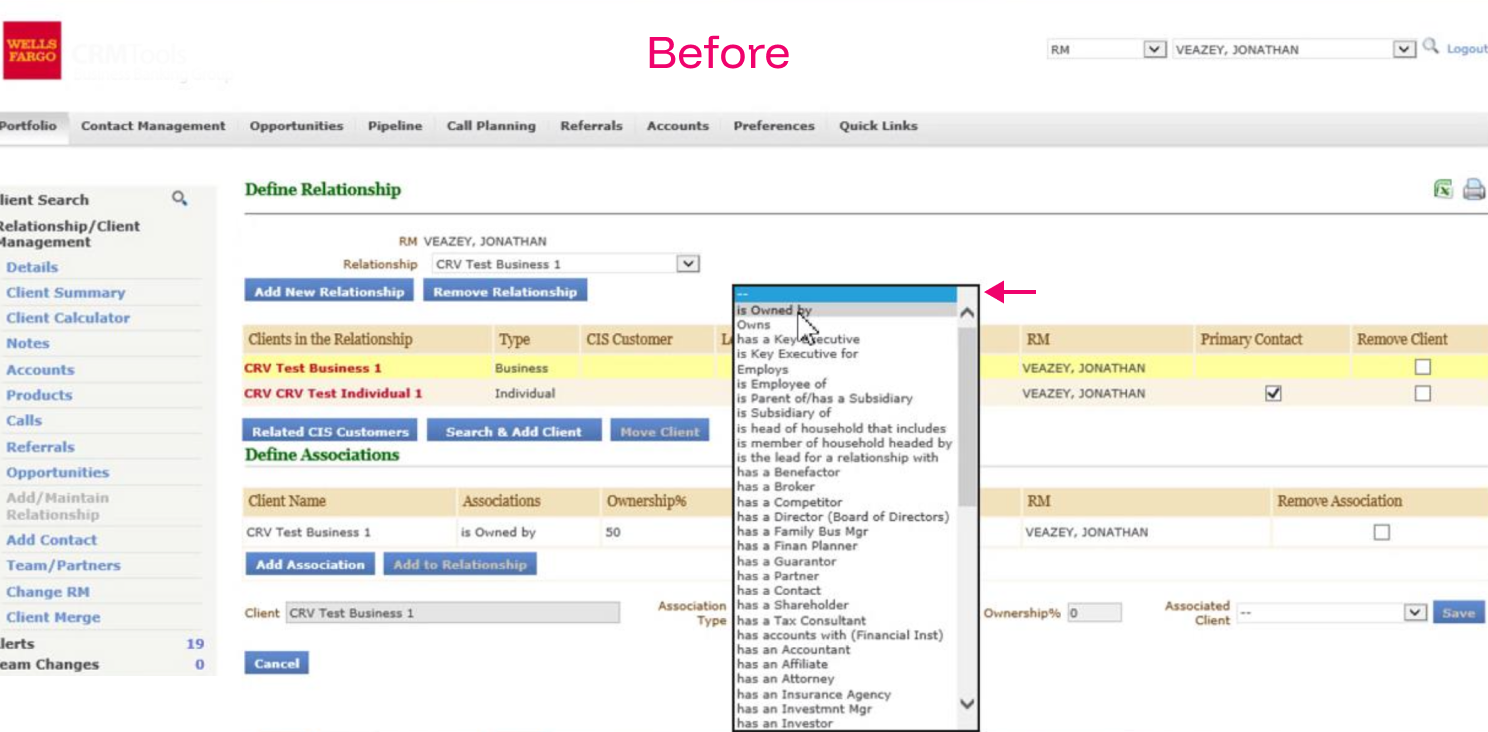
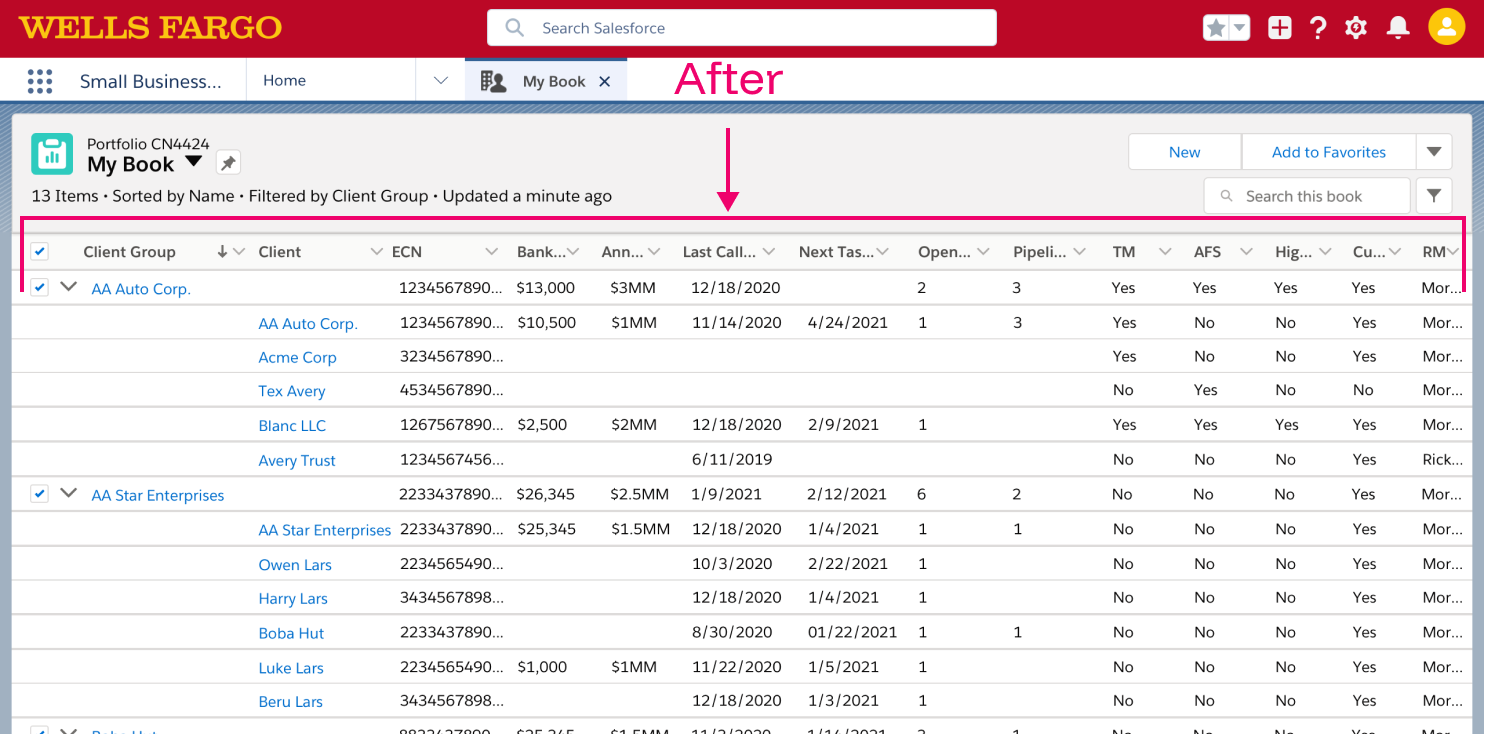
Customer 360 View Enhancements
Before: Customer data was difficult to interpret due to fragmented screens and inconsistent layouts, requiring extensive navigation and increasing cognitive load for bankers.
After: The new customer dashboard consolidates all relevant client information into a single, easy-to-navigate view, improving efficiency and reducing the need for context switching.
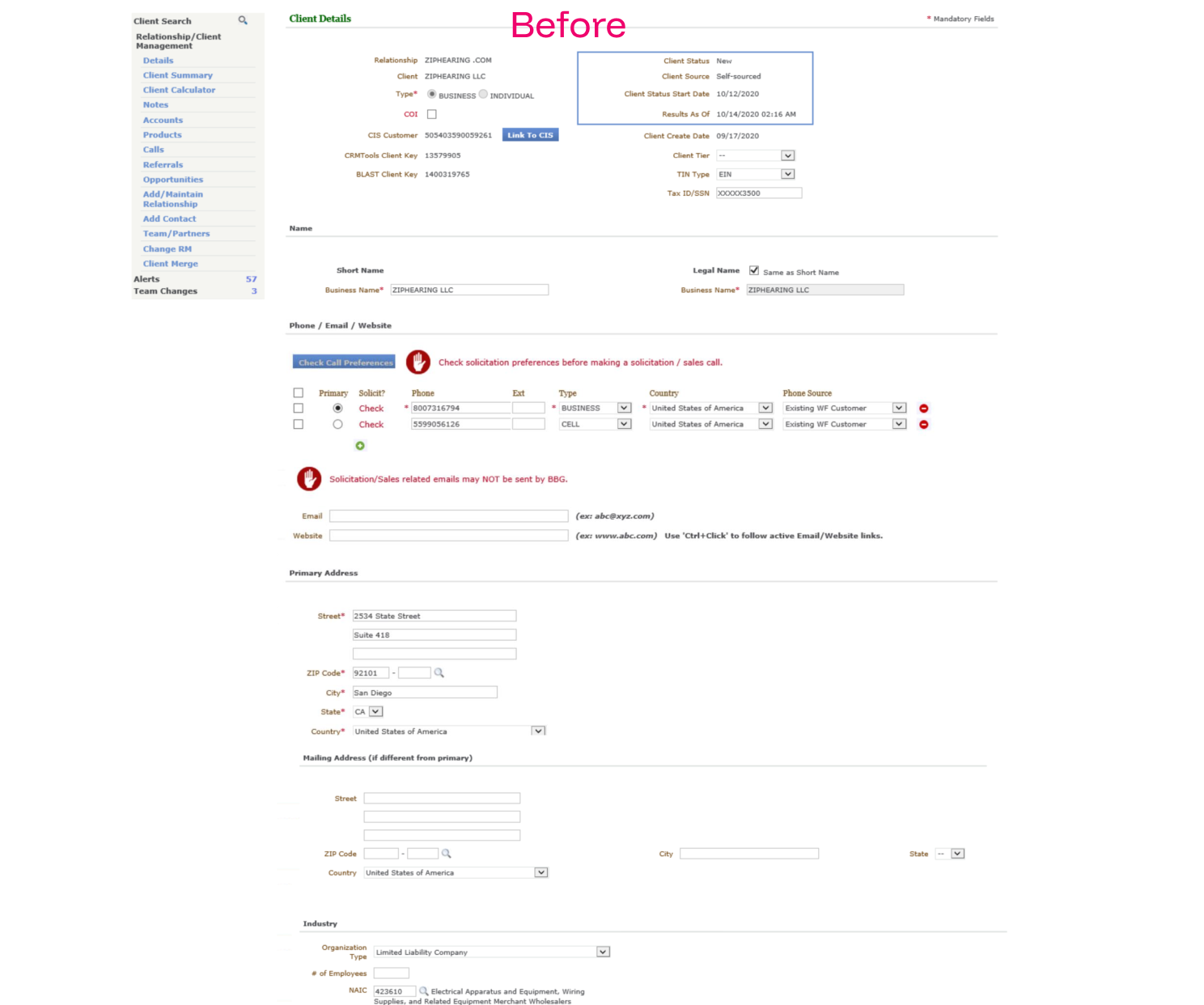
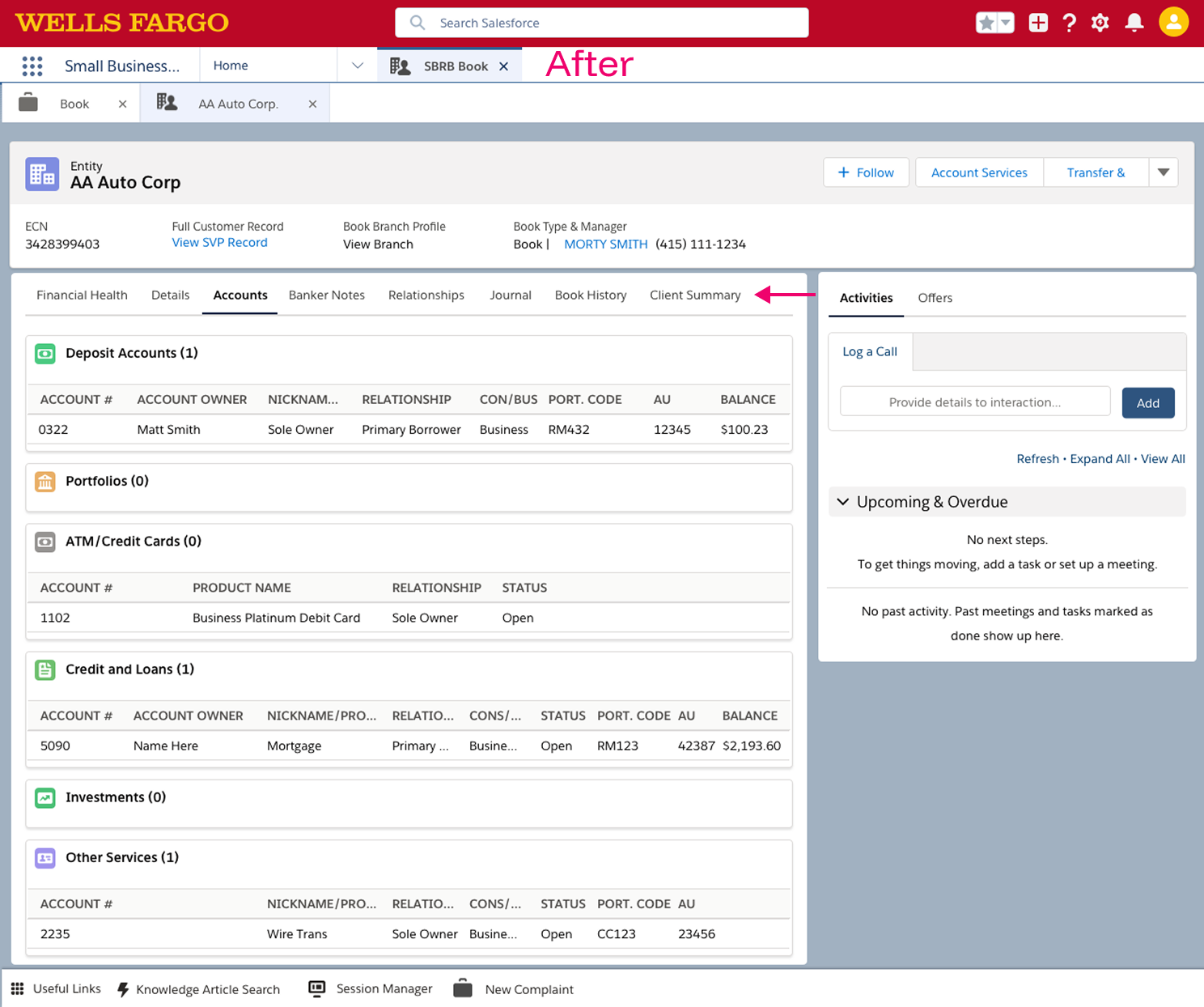
By addressing these challenges, the transition to Salesforce created a more intuitive, scalable, and efficient CRM experience for small business bankers.
Research & Insights
Understanding User Needs
Understanding the daily workflows of small business bankers was essential for a successful transition to Salesforce. Partnering with the UX research department, I participated in interviews to document banker pain points, workflow inefficiencies, and desired improvements.
Working alongside the UX researcher, we developed a structured plan to conduct in-depth interviews with bankers, documenting their workflows, pain points, and areas for improvement. Using these insights, I created an interactive prototype that allowed users to navigate key processes, identify inefficiencies, and validate expectations. This ensured our solution aligned with their daily operations while integrating seamlessly into Salesforce.
- Mapping the end-to-end banking experience through prototyping to identify friction points
- Using research findings to validate design decisions and ensure alignment with banker needs
- Identifying essential possible pain points and using the reserach to justify design decisions
- Collaborating with the Salesforce solutions architect to assess whether out-of-the-box features were sufficient or required customization
Collaboration & Business Alignment
- Working directly with stakeholders, collaboration ensured business goals were met by integrating feedback from banking leadership.
- Partnering with the Salesforce architect, I aligned custom component development with Salesforce best practices to ensure scalability and functionality.
- Participating in usability testing and iterative design sprints allowed us to refine the final product, ensuring it met both user and business requirements.
Outcome & Impact
The integration of the legacy CRM into Salesforce resulted in measurable improvements in efficiency, usability, and data accuracy for small business bankers. By aligning user needs with business goals, we streamlined workflows, minimized friction, and delivered a scalable system that expanded across other banking departments.
- Successfully launched with strong internal support, and the UX team was acknowledged as a key contributor to the platform's evolution.
- Estimated 25–35% increase in adoption of the new Salesforce CRM tool among small business bankers.
- Reduction in user-reported errors by approximately 15–25%, improving accuracy and efficiency.
- Custom Salesforce components, originally built for this use case, were later rolled out to additional business units for broader impact.